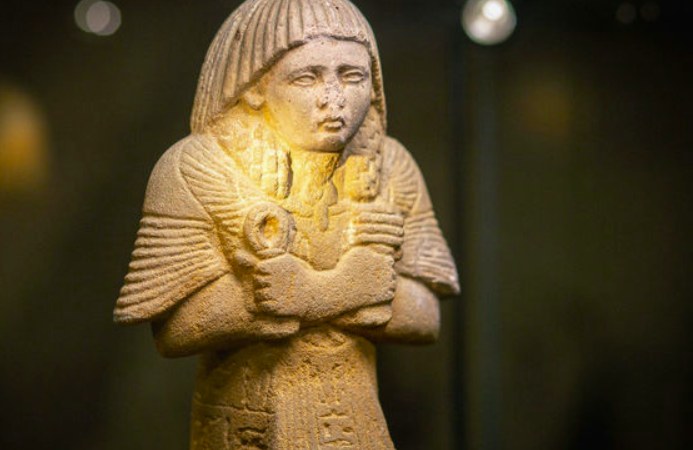The Mysterious Nubia exhibition in the Historical Building of the National Museum commemorates the international action to save endangered monuments in the historical territory of Nubia, which was announced by UNESCO 65 years ago. Thanks to the Czechoslovak expeditions and the participation in the findings of the then Czechoslovak Institute of Egyptology of the Faculty of Arts of the Charles University, the exceptional cultural heritage of the Lower Nubian region has been preserved in the collections of the National Museum.
In 1959, the Egyptian government decided to build the High Dam near Aswan, which was supposed to ensure the development of industry and agriculture in the country. As a result of the construction of the dam, however, the entire, approximately 500 km long section of the Nile, representing the historical territory of Lower Nubia, was to be flooded and its exceptional cultural heritage threatened. UNESCO therefore announced an international action to save endangered monuments, in which Czechoslovakia was also involved through the Czechoslovak Institute of Egyptology, founded not long before, which sent a total of five expeditions to the area of Lower Nubia (today's Egypt) in the years 1961–1965.
The first and second expeditions (1961–1962) were devoted to the localization of the so-called Southern Temple in Táfa and the documentation of the so-called Roman fortress in nearby Kertás. Work in the following two years (1963–1964) concentrated on two areas designated as the northern and southern Czechoslovak concessions. As part of the epigraphic survey of both concessions, 243 rock inscriptions and over five thousand rock drawings and paintings were found. An archaeological survey was carried out hand in hand with the epigraphic survey. A total of five burial sites, seven rock tombs, a series of watchtowers used to protect the southern border of the Roman Empire that ran through the region, and one quarry were discovered. The last expedition in 1965 aimed at the archaeological research of two burial mounds located in the localities of Wádí Kitna and Jižní Kalabša.
The exhibition presenting Czechoslovak activities as part of the UNESCO event places the interest of the inhabitants of the Czech lands in the ancient history of Nubia in a wider historical context. Already in 1827, Anton Prokesch von Osten, an Austrian soldier and diplomat with Czech roots, went to Lower Nubia and made a very accurate map of the entire area. You will be able to get to know his notes and knowledge from his travels in the exhibition, as well as letters, diaries and, in later times, also photographs of other Czech travelers. In addition to the expedition of the Czechoslovak Institute of Egyptology, the most important Czech Egyptologist, Jaroslav Černý, who worked in British exile after 1948, also participated in the international event in Nubia under the auspices of UNESCO.
The objects that Czechoslovakia received as a share of the finds from the UNESCO event are today stored in the Náprstek Museum of Asian, African and American Cultures of the National Museum. As part of the Mysterious Nubia exhibition, you will be able to see a unique set of rock inscriptions that describe the brutal practices of Egyptian troops at the beginning of the 12th dynasty (20th century BC) against the local Nubian population, as well as fragments of coffins that were in the second half of the 2nd millennium BC used for the burial of local elites or the exquisitely decorated production of Nubian potters. The exhibition also includes collection items on loan from the Kynžvart State Castle and the Buchlova State Castle. The complete burial equipment of the ancient Egyptian seal bearer Kenamon from the peak of the 18th dynasty (15th century BC) was lent from Kynžvart, including two bows, which in ancient times were a symbol of Nubia, i.e. the Land of the Bow. Kenamon was buried in a black coffin, richly decorated with gold from the Nubian mines, a copy of which will also be on display as part of the exhibition.
